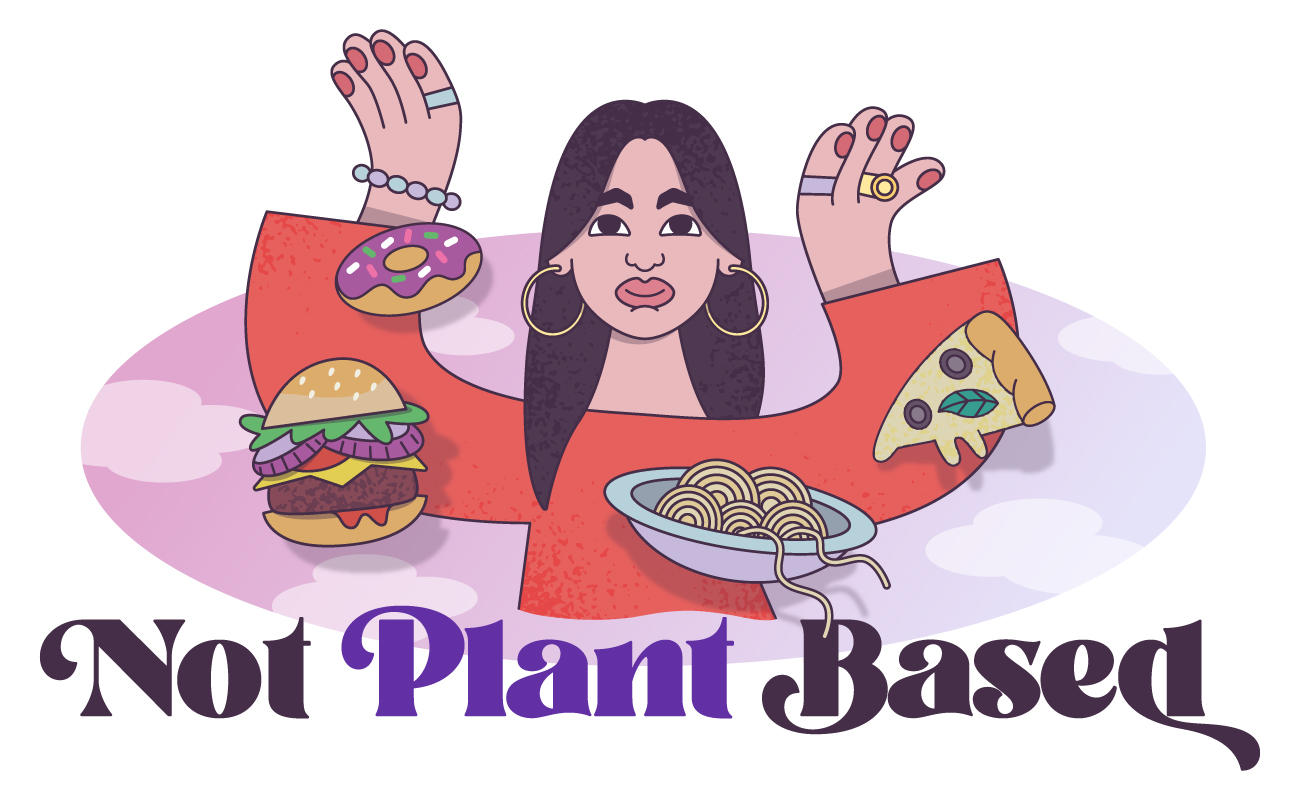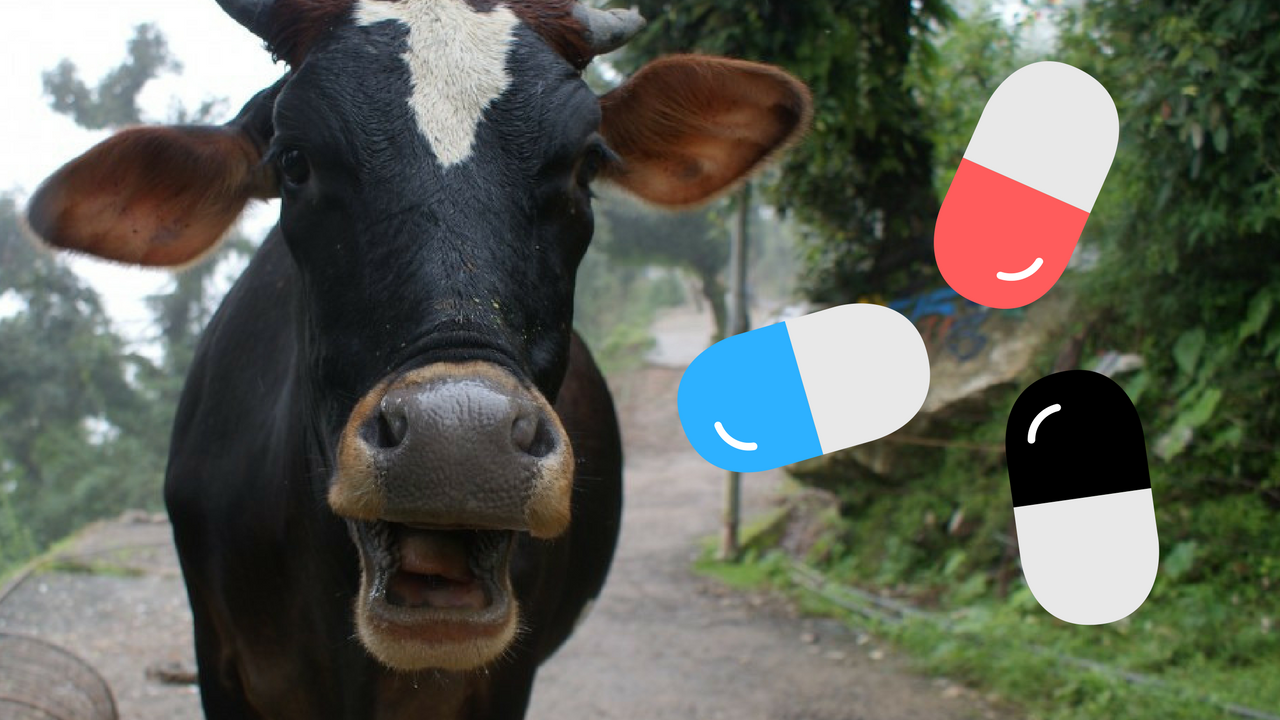
Thank GOD we’re finally coming the end of veganuary. There, I said it. Over the past couple of weeks I have become increasingly irritated by the amount of otherwise respectable individuals who have naively jumped on the vegan bandwagon, spouting shortsighted, inaccurate information about antibiotics as explanation for their ‘lifestyle improvement’.
Before everyone starts pelting me with butternut squash burgers, let me say this: I am obviously not against veganism. Nor am I opposed to anyone’s personal choice of diet or lifestyle. What I am vehemently disapproving of however, is fiction dressed up as fact. And even more so; those who use such fiction (or more commonly a tiny slice of information about a whole, complex topic) to justify arrogant, aggressive behaviour. Never has this vitriolic pseudoscience been more apparent then in post antibiotic crisis veganuary 2018.
At the end of last year, England’s Chief Medical Officer, Dame Sally Davies, warned of the catastrophic health risks facing the globe due to a global over-exposure to antibiotics. Dame Sally, along with other health experts, advise that as exposure to antibiotics increases, so does our resistance to them – hence making them less effective at treating infections such as septicaemia, gonorrhoea and pneumonia The officer warned that in a few years time, resistance to antibiotics could mean that routine operations such as hip replacements become potentially life-threatening.
Whilst antibiotic resistance is no joke, holding the meat and dairy industry wholly responsible for the issue is an entirely false judgement. Yet, countless articles have popped up with the predictable stock cow image designed to illustrate how demonic and disease-inducing the farming industry is. My, they tell us, if only we knew of the amount of ‘stuff’ that’s ‘pumped’ into our roast chickens (other than delicious stuffing), we’d never step foot into the chilled meat section of Sainsbury’s. However, like everything, it’s just not that simple.
Firstly, a 2016 Government report detailing the annual sales and practice of antibiotic use showed that last year, the amount of antibiotics purchased within the UK farming industry was at its lowest since 1993. After initial Government warnings about antibiotic resistance threat in 2014, the Department for Environment, Food and Rural Affairs (Defra) committed to reducing antibiotics used within farming practices by 20 per cent by 2018 from an average of 62 mg/kg, to 50 mg/kg. This was achieved within two years; with sales of antibiotics for use in food-producing animal species decreasing to 45 mg/kg in 2016. Critically, the use of the antibiotic Colistin (one of the last remaining antibiotics we haven’t yet developed a strict resistance to) was reduced to 0.02 mg/kg – way below the European Medicines Agency recommendation of 1mg/kg. Safe to say, the British farming industry are doing what they can. Hence, headlines like; MOST UK SUPERMARKETS FALLING SHORT IN FIGHT AGAINST ANTIBIOTIC CRISIS are misleading and unhelpful. This article in particular refers to supermarkets’ willingness to publish their antibiotic policy which, whilst not exactly transparent, doesn’t mean they are ramming shelves full of cows bursting with Colistin.
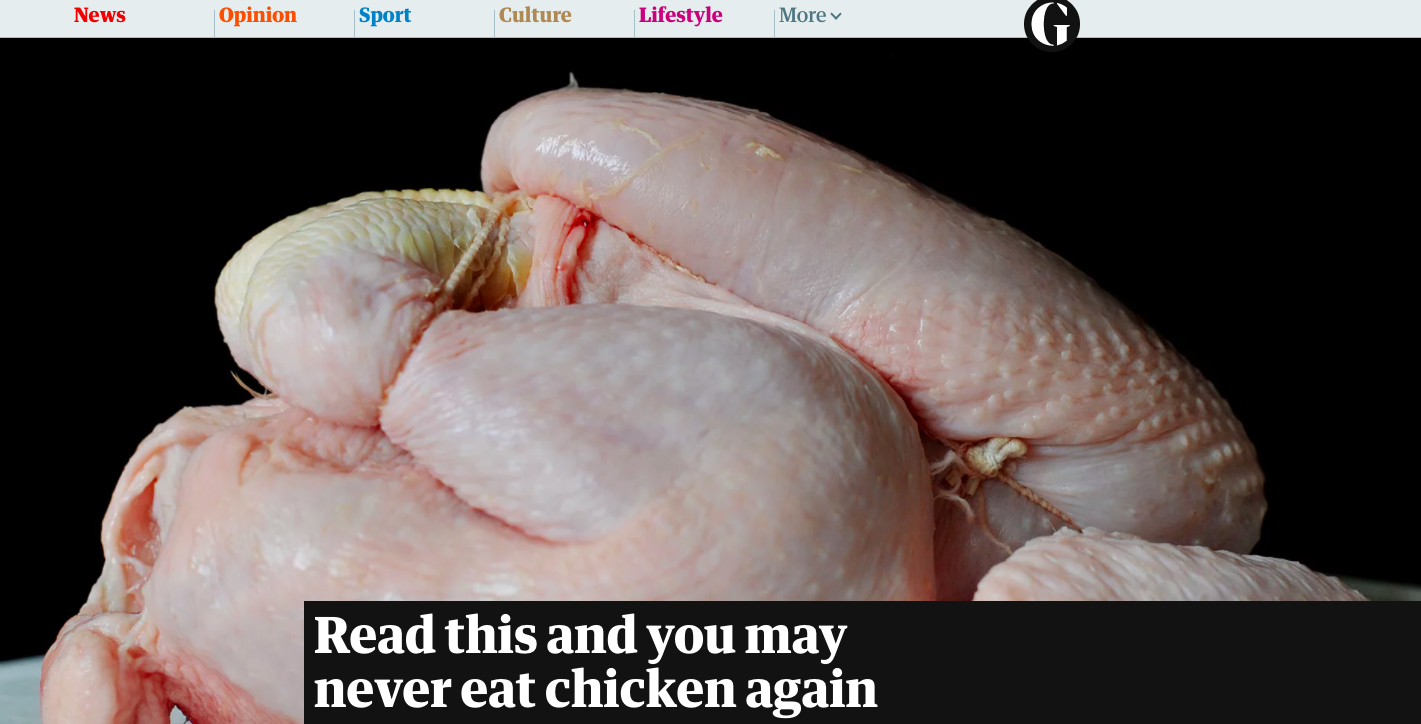
So how do antibiotics get from being injected into a cow, into our Shepherd’s Pie? Well, in short: they don’t. According to Dr Jude Capper, Livestock Sustainability Consultant, it’s almost impossible that the meat we purchase in the local Lidl will contain any antibiotics or nasty injectables whatsoever. ‘No meat, post slaughter, is injected with antibiotics,’ she says, ‘animals may be treated with antibiotics if they have a disease or health issue, but farmers observe strict withdrawal periods – as in, the time after treatment during which animals cannot be slaughtered or have their milk used for human consumption’.
Jude also highlights the Government’s Code of Practice, which states the strict rules and regulations that the agricultural chain MUST adhere to in order to get animal products in front of a consumer. ‘Tests occur at the processing stage to ensure that the meat we buy, whether at the supermarket or farmers’ market, does not contain antibiotics.’ What’s more, the use of antibiotics to promote the growth of livestock was made illegal by EU law in 2006.
‘Bird health is poorer in free-range systems’
On the contrary, antibiotics are used in farming only when an animal has an infection or illness which is compromising their health. These antibiotics can only be prescribed by a specific veterinary nurse, and are only issued after government officials have carried out tests to ensure the medication will be used safely, and to establish an amount that won’t lead to excess residue seeping into the surrounding environment.
High level use of antibiotics in the agricultural sphere is undoubtedly an issue for consideration (it’s estimated that 700,000 people die every year from drug resistant strains of common bacterial infections) and steps are needed to reduce such use. But according to the Chief Veterinary Officer, Nigel Gibbens, it’s remains difficult to fully establish what exactly it is doing to our, human health. If anything, that is. And – more to the point – if eating an antibiotic treated chicken poses any more of a ‘threat’ to our ability to fight infections than cleaning the toilet does. You see, the problem at hand isn’t as simple as ‘cow is treated with antibiotics, we drink cow’s milk, antibiotics enter our body leading to overexposure to the drugs’, therefore making us resistant to them. It’s much more complicated than that (as i’ve found out since writing this article).
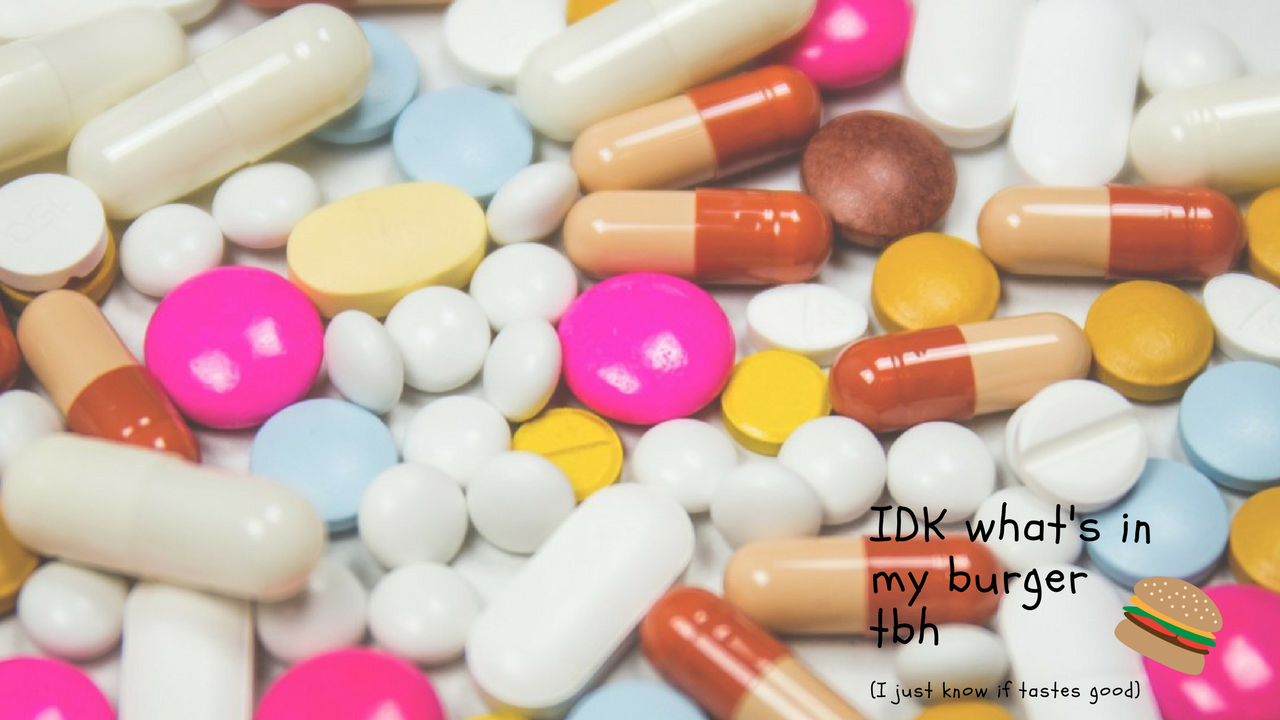
The issue at hand is not to much about the presence of antibiotics themselves in the animal products we consume, but rather the bacteria that eventually builds up in animals which eventually becomes resistant to antibiotic treatment. We know that the more animals (and humans) are treated with antibiotics, bacteria exposed to those antibiotics become resistant, whether or not those were the ones that caused the disease. UN and World Health Organisation reports state that resistant bacteria builds up not only in the animals themselves, but also within the surrounding environment. According to the Frontiers ’17 UN report: ‘The release into the environment of non-lethal levels of various antimicrobial compounds in domestic and hospital effluents and in agricultural runoff, combined with direct contact between the natural bacterial communities and the resistant bacteria released, is at the origin of the bacterial evolution and the emergence of resistant strains.’
In other words, animals’ waste products infiltrate the landscape with antibiotic resistant bugs. But, we ALSO do exactly the same whenever we take an antibiotic and go for a wee, as do hospitals when they expel their waste into the surrounding land. All of the above increase the likelihood that we may be exposed to antibiotic resistant bacteria. Which, of course, was always going to happen – regardless of how/what we eat. The 2016 official review of the issue, commissioned by the government, reported: ‘Resistance to antimicrobials is a natural process that has been observed since the first antibiotics were discovered – and, indeed, the genes that confer drug resistance upon some strains of bacteria pre-date antibiotics by millions of years.’
‘No evidence indicates that antibiotic-resistant strains are more refractory to cooking than are the largely susceptible strains’
An assumption worth challenging is this: the only – or most pressing – form of antibiotic resistance is that which is passed on from animals to human. The 2017 Food Standards Agency and Government report states that at this current time, there is simply not enough hard UK-based data to jump to any hard or fast conclusions. It reads: ‘Our understanding of the ecology and transfer of antimicrobial resistant bacteria in the food chain is improving but remains incomplete. Differences in surveillance systems, methodology, target organisms, and drugs often make it difficult to align information and make comparisons particularly between countries or at different times. ‘ Much of the currently available data points to Chinese or American farming; whereby the use of growth antibiotics is legal and widely used. The above report also goes onto make recommendations for the global reduction in drug resistance which can be actioned independent of farming. The developments of vaccinations, improvement in global hygiene, the development of alternative drugs, better diagnostic tools e.t.c. Governments, so far, have invested exceedingly little in the problem – just 1.2 per cent of research grant funding in the U.S, for example. Hence, the lack of cause and effect information. What we do know, however, is that human-to-human resistant strains (via the over-prescription of drugs) are a real, measurable problem.
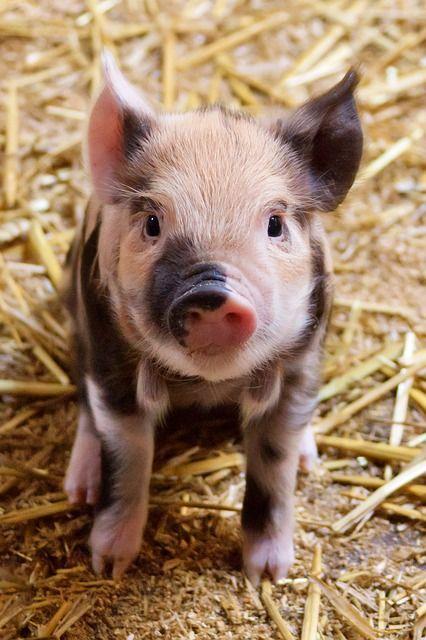
Then there’s the issue of all the other ways that antibiotic resistant nasties can reach us in 2018. A recent review of the available literature published in the Journal of Antimicrobial Chemotherapy listed some of them; sewage streams, the excretion from rodents (i.e birds, rats), pet animals, general poor hygiene (i.e dirty worktops, trains ,buses e.t.c) and last but not least…plants (sorry vegans). ‘Multiple antibiotic-resistant E. coli strains were found to be widespread contaminants of market vegetables in London during the investigation of a community outbreak of E. Coli’, and many antibiotics are used to prevent bacterial diseases in plants, as well as in the genetic engineering process.
So what if the worst happens and you were unlucky enough to pick up a packet of pork mince riddled with antibiotic resistant E coli? Well, unless you’re a bit mental, you cook it. As written in the report by researchers at the University of London: ‘It is generally accepted that adequate cooking destroys bacteria in food. No evidence indicates that antibiotic-resistant strains are more refractory to cooking than are the largely susceptible strains on which the original research was conducted.’ So, as long as you’re cooking meat adequately and not drinking weird, raw milk, then there’s pretty much the same chance of contracting a bug as there would be with regular meat.
Having said that, if an active, resistant strain of bacteria does make its way into the human tract, and it is a pathogenetic strain (i.e it has developed to cause disease) it will undoubtedly make you sick. But this is very, very, very, very unlikely to happen. Firstly, humans and animals are different species and therefore – depending on which organ carries the bacteria in the animal – direct transfer is usually impossible. In order for bacteria to ‘colonise’ (i.e be active in the digestive system), it would have to survive the acid in the stomach and then reach the intestine. Studies show that common bacteria, Escherichia coli and Enterococcus don’t usually colonise or infect the human gut directly. However there are some bacteria that have been shown to get through – bacteria such as Salmonella and Campylobacter, for example, present similarly in animals and humans meaning that in theory they could ‘colonise’.
However this has been identified as the culprit for serious human bacterial infections in an incredibly small number of patients in the UK. It’s not 100 per cent known how exactly these bugs make it into the human system – and it’s reductionist to assume that poor hygiene or cross contamination has nothing to do with it. One particular nasty strain of the bacteria MRSA, found in Danish pigs, has been found to lead to hospital admissions – and deaths – in some Danish humans who may have contracted the bug either directly, or in directly, from diseased pigs. However, since screening programmes were introduced in 2012, just six people have died of the bug. Obviously I am not minimising these deaths, but it’s worth putting the figure into context, considering 208 Danish people were killed in 2016 due to traffic incidents.
Many articles will point to the use of so-called ‘mega-farms’ as reason for the stark rise in use of antibiotics. At first glance, it makes sense to imagine these humungous tents, bursting at the seams with squawking, miserable ADHD chickens, with tyrant farmers injecting their pert buttocks with antibiotic injections. However, this isn’t necessarily the case. Firstly, it’s the misuse of antibiotics that’s the problem (i.e giving them unnecessarily), and this happens just as often in smaller farms as it does in the large-scale ones. In fact, many large-scale farms have sufficient funds to be able to commit to being 100 per-cent antibiotic free and are subject to more government checks and balances than smaller farms.
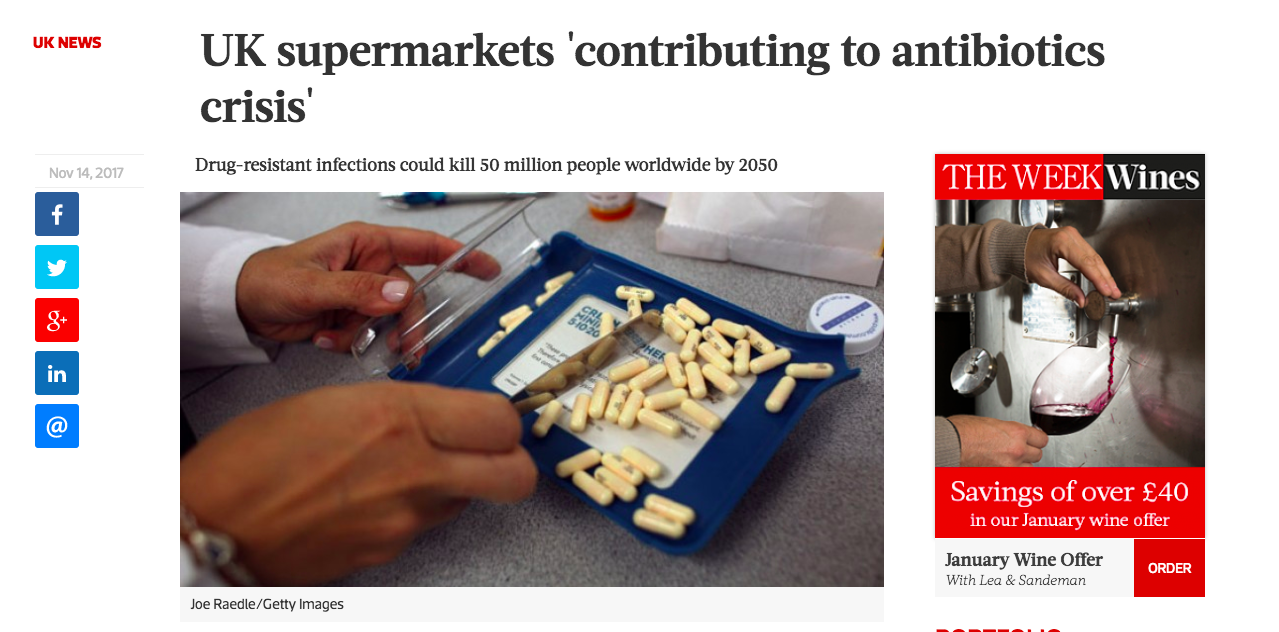
Then there’s the issue of cruelty. Before writing this article, it seemed logical to assume that if an animal was kept in confined conditions and injected with drugs, it wasn’t having a great life. Hence the championing of ‘free-range’. According to Dr Capper, who spends her professional career researching the best, most ethical rearing practices: ‘Science doesn’t always means that “ethical” is best.
‘Bird health is poorer and death is higher in free-range systems compared to confined systems. So which is better, a housed (cramped) life, or illness and an early death? Not an easy question for many of us.’ Indeed, if an animal is desperately sick and there’s a drug that can make them better – as is the case in humans – is it ethical to deny them of such drug and instead see them live the rest of their life in pain? All in aid of avoiding the incredibly slim chance that somewhere in the world a person may pick up a packet of meat that may make them sick should they fail to cook the meat properly? I’m not saying I know which is the best choice, but it’s certainly something to think about.
This has been quite a lot to take in, so allow me to let animal microbiologists at the University of London to conclude: ‘Only in the case of salmonellae and campylobacters do risk analyses, albeit still hampered by a lack of data, suggest that resistance possibly acquired in animals may add, albeit very little, to the burden of human disease.
‘I have never met or talked to a farmer who didn’t care deeply for their animals’
‘Almost every case made for or against antibiotics used in animals is complicated by the use of the same antibiotics in humans, which are equally able to give rise to resistance. The banning of any antibiotic usage in animals based on the ‘precautionary principle’ in the absence of a full quantitative risk assessment is likely to be wasted at best and even harmful, both to animal and to human health.’ Basically, it’s a complicated issue which you – nor I – don’t understand properly purely because the sufficient scientific data isn’t available yet. We certainly aren’t prepared to make a fully informed judgement either way.’
Contrary to what most people think, farmers care a great deal about their animals – and about practicing ethically and safely. As the girlfriend of a farmer’s son, I’ve seen first hand the upmost adoration that agricultural workers have for animals. Most get paid a pretty shitty wage, and are forced to do manual labour for 12-15 hours every single day. Suicides are higher in the farming community than in most other industries – if they didn’t give a shit about their animals, they wouldn’t do it.
‘Obviously there are exceptions in every industry,’ says Dr Capper, ‘but I have never met or talked to a farmer who didn’t care deeply for their animals and do their very best to keep them health, well-fed and well-cared for.’
And if you’re still thinking that the ultimate conclusion would be to set all the animals free and stop the livestock industry all together, then read this.

